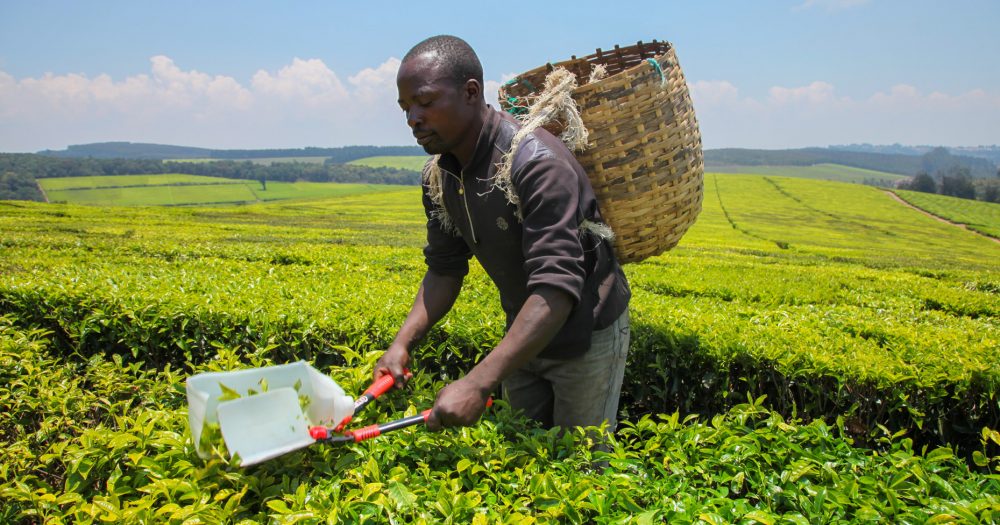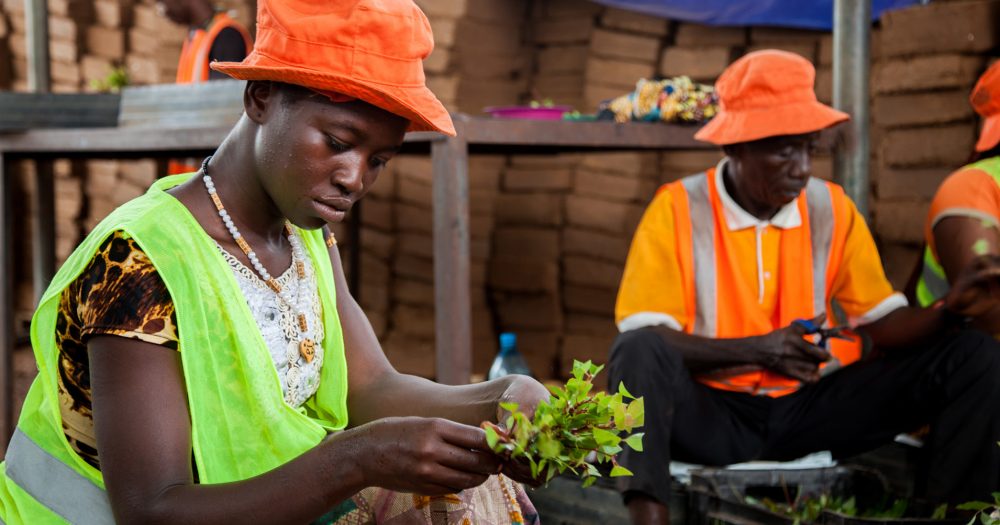This investment was made when British International Investment was named CDC Group.
Our investment
Description of the investment.
Description of the investment.
In 2013, CDC and Standard Chartered Bank (SCB) signed a risk participation agreement to increase the availability of trade finance in CDC’s markets. Following its successful implementation, the facility was gradually increased in subsequent years and reached $400 million in 2018. In 2020, CDC increased the facility to $500 million to provide additional counter-cyclical support during the COVID-19 pandemic to help mitigate the indirect economic impacts of the crisis.
The agreement allows SCB to increase its limits to local banks, which has the potential to increase the volume of short-term trade credit by up to $800 million per annum. This will allow domestic banks in Africa and South Asia to support trading businesses in importing commodities and equipment and ultimately support economic opportunities and access to goods for employees and consumers. By the end of 2020, the agreement had enabled over $10 billion in trade volumes across 13 countries in sub-Saharan Africa and South Asia.
Impact information
Applies to investments made from 2019 onwards. The tabs in this section define what we expect to achieve through the investment, assessing the potential impact of the investment against six dimensions of impact. You can find more details on our methodology of assessing impact here.
Applies to investments made from 2019 onwards. The tabs in this section define what we expect to achieve through the investment, assessing the potential impact of the investment against six dimensions of impact. You can find more details on our methodology of assessing impact here.
What?
| Impact |
|---|
|
|
|
How?
| How? |
|---|
|
Economic enabler: CDC has provided a risk-share arrangement so that SCB can extend more foreign currency trade credit to regional and domestic banks and sustain higher trade volumes than the bank can support without CDC’s support. This will enable businesses to import the commodities and equipment they need to sustain business operations, market output and contribution to GDP, ultimately leading to job/livelihood retention and the continued or increased availability of goods in the market. |
Who?
| Stakeholder | Geography | Characteristics |
|---|---|---|
| Employees, consumers |
Across Africa and South Asia. Since 2015, approximately 50 per cent of CDC’s trade participation under this facility has been in category ‘A’ and ‘B’ countries, e.g. Pakistan, Nigeria and Nepal. The remaining has been in category ‘C’ countries such as Kenya and Egypt. |
Given the variance of industries in which the businesses operate, for characteristics of people who ultimately benefit from the enabled trades, we assume mass market characteristics and demographics of the respective geographies. |
How much?
| Scale | Depth/Duration |
|---|---|
|
It is not possible to state the number of people who will be reached, so we use the scale of the facility and enabled trade as a proxy. Based on assumptions related to average tenor and utilisation, we anticipate that the $500 million facility will enable up to $800 million in additional trade volumes per year. |
The World Bank recently adjusted growth projections for Africa from 2.4 per cent in 2019 to -2.1 to -5.1 per cent in 2020. For South Asia, regional growth has been estimated to fall to 1.8-2.8 per cent in 2020, down from 6.3 per cent projected six months earlier. As a result, impact is expected to be deeper in a context where the counterfactual has worsened (i.e. lower household welfare due to higher rates of unemployment and lower access to goods/services as a result of the COVID-19 crisis). |
Contribution/additionality
| Contribution/additionality |
|---|
|
Grid score
| Grid Score
To help us direct our investments, we previously used a tool called the Development Impact Grid. It scored investments out of four, based on two factors: the difficulty of investing in a country and the propensity of the sector to generate employment. This tool was used for investments until the end of 2021. Since 2022 it has been replaced by the Impact Score. |
|---|
3.25Market context: The global trade finance gap is estimated to be $1.5 trillion, and the average unmet demand in Africa represents 5.5 per cent or $91 billion |
Risk
Evidence Risk
External Risk
|
Environmental and social information
-
Environmental and social summary
A high-level description of the environmental and social aspects of the investment. This may include a summary of key environmental and social risks identified during environmental and social due diligence (ESDD); key elements of an environmental and social action plan (ESAP); or ways in which we plan to support the investee improve environmental and social standards, such as through their environmental and social management system (ESMS); as well as any other priority areas agreed with the investee.
-
Environmental and social risk
A risk category rating, which indicates the level of environmental and social risk associated with an investment. For an explanation of the categorisations used, see here. We consistently provide an environmental and social risk category for all investments screened from 2023 onwards.
Environmental and social summary
A top up E&S due diligence was conducted in house in 2023 and included a visit to SCB’s office in London. This comprised of a discussion of the Bank’s E&S risk management framework and how this had been integrated into trade finance products, HR policies and procedures, as well as discussions with the relevant teams to understand existing processes, practices and capacity, and a parallel request for documentation.
Reporting and Complaints Mechanism
The Reporting and Complaints Mechanism allows anyone outside BII to report alleged breaches of the business integrity or environmental and social provisions of BII’s Policy on Responsible Investing. This includes breaches made by BII, a BII investee, or a portfolio company of a fund in which BII has invested. The Reporting and Complaints Mechanism Rules are available here. Reports and complaints can be submitted by email to reportsandcomplaints@bii.co.uk or by mail. See more details on our Reporting and Complaints Mechanism here.
For any other general enquiries contact us at enquiries@bii.co.uk
-
Key facts
- Last updated
:
When the last quarterly update of the website database occurred.
- June 2024
- Project number
:
An identifier number shared by investments in the same project.
- D36
- Status
:
The current status of the investment (green flag for active and red flag for exited).
- Active
- Region
:
The geographical region where the country is located. We currently invest in Africa, South Asia, South East Asia and the Caribbean. In 2023, BII’s investment mandate was extended allowing it to invest in regional funds linked to Ukraine, with the majority of activity expected to begin post-war. Investments outside these regions were made prior to 2012 under previous investment mandates.
- Rest of the World
- Sector
:
We prioritise those sectors that facilitate development and need our capital the most. Our priority sectors contribute towards many of the Sustainable Development Goals. They range from investing in the power infrastructure that will provide people with better access to electricity, to investing in financial institutions that direct capital to the individuals and businesses that need it the most.
- Financial services
- Investment type :
- Guarantee
- Start date :
- November 2015
- Amount :
- $250m
- Currency of investment :
- USD
- Domicile
:
The company or investment fund’s place of incorporation.
- United Kingdom
We provide capital in the following ways: directly – through direct equity, direct debt, guarantees and other non-intermediated financial instruments; and indirectly – principally through investment funds.
For direct investments and fund investments, this is the date BII committed capital to the investments. This is typically the date on which legal agreements are signed by all parties.
For the portfolio companies of our fund investments, this is the date (either the month or the quarter) on which the fund committed capital to the portfolio company.
For direct equity investments, this is the date at which British International Investment exited the investment.
For debt investments, this is the date at which the final debt repayment was made.
For funds, this is the date at which the fund was terminated.
For underlying fund investments, this is the date at which the fund manager exited the investment.
The total amount committed, per financial instrument, per investment, on the date BII becomes subject to a binding legal obligation to provide funding or assume a contingent liability. This information is provided in US dollars.
For direct investments, this is the amount that BII has committed to the business or project. For fund investments, this is the amount BII has committed to the fund.
The currency in which the investment was made.
- Last updated
Related investments made by BII into this company:
| Investment name | Commitment | Region | Sector | Start date | Status |
|---|---|---|---|---|---|
| Investment 04 | $-100m | Rest of the World | Financial services | September 2016 | Active |
| Investment 05 | $100m | Rest of the WorldRest of the World | Financial services | June 2018 | Active |
| Investment 06 | $400m | Rest of the WorldRest of the WorldRest of the World | Financial services | May 2019 | Active |
| Investment 07 | $100m | Rest of the WorldRest of the WorldRest of the WorldRest of the World | Financial services | June 2020 | Active |
| Investment 10 | $-150m | Rest of the WorldRest of the WorldRest of the WorldRest of the WorldRest of the World | Financial services | June 2024 | Active |
| Investment 10 | $-150m | Rest of the WorldRest of the WorldRest of the WorldRest of the WorldRest of the WorldRest of the World | Financial services | June 2024 | Active |


